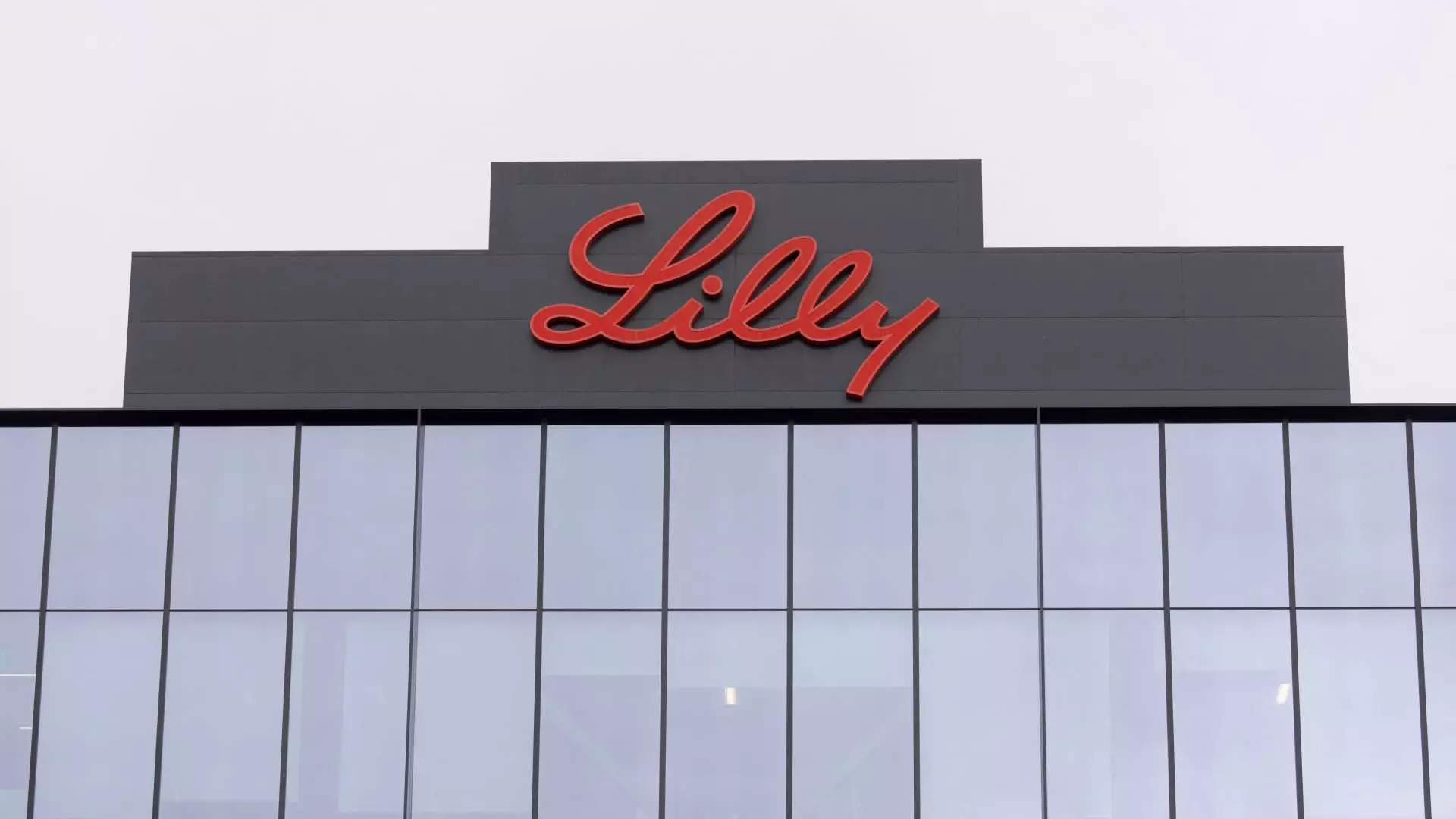Eli Lilly’s recent quarterly report has sent shockwaves throughout the financial landscape, as the pharmaceutical giant grappled with disappointing profits and revenues for the third quarter of the fiscal year. The company’s adjusted earnings per share (EPS) of $1.18 lagged substantially behind analysts’ expectations of $1.47, while revenue figures also fell short, totaling $11.44 billion compared to the anticipated $12.11 billion. This divergence from projections culminated in a significant decline of approximately 10% in the company’s stock value, marking a troubling shift for investors invested in the pharmaceutical industry.
Key Factors Driving Adjusted Guidance
In light of these disappointing results, Eli Lilly has drastically lowered its adjusted profit guidance for the year. The company now foresees earnings hovering between $13.02 and $13.52 per share – a stark decrease from its earlier forecast of $16.10 to $16.60 per share. This downward adjustment can be attributed to several factors, notably a substantial $2.8 billion acquisition-related charge that weighed heavily on third-quarter results. Furthermore, Eli Lilly has revised its revenue projections, now expected to fall between $45.4 billion and $46 billion, down from an original ceiling of $46.6 billion.
Eli Lilly’s flagship products, particularly the weight-loss drug Zepbound and the diabetes treatment Mounjaro, did not live up to the high sales expectations that were initially set. Both drugs, designed to harness the mechanisms of incretin hormones for appetite control and blood sugar regulation, experienced weaker-than-anticipated sales, which the company attributed to significant inventory reductions within wholesale channels. Despite a booming demand that has far outstripped supply in the United States, Lilly is now at a crossroads, needing to recalibrate its production and sales strategies.
Market Dynamics and Competitive Landscape
The pharmaceutical market is currently characterized by fierce competition, particularly in the realm of incretin therapies, where Eli Lilly finds itself in a battle against rivals like Novo Nordisk. The popularity of these injectable drugs has triggered massive investments by both companies to scale up manufacturing capabilities in response to soaring demand. While supply shortages had begun to ease earlier this year, the FDA’s latest reports indicate that all doses of Zepbound and Mounjaro are now accessible in the U.S. However, potential delays in prescription fulfillment at various pharmacies still pose challenges for patients reliant on these medications.
Eli Lilly’s current predicament adds a layer of complexity to its future trajectories. Investors and industry stakeholders will be closely monitoring how the company navigates this turbulence, particularly in how it addresses its supply challenges and adapts to the competitive market dynamics. With key adjustments in its earnings projections and ongoing pressures from the market, Eli Lilly must act swiftly and strategically to restore confidence and stabilize its position within the pharmaceutical sector. The coming months will be crucial in determining whether the company can rebound from this setback or face prolonged struggles amidst shifting market conditions.


Leave a Reply